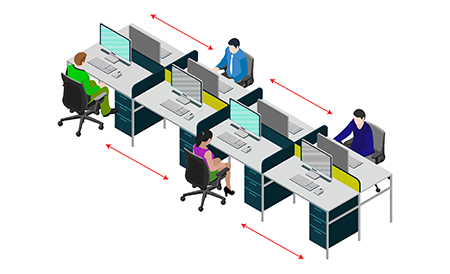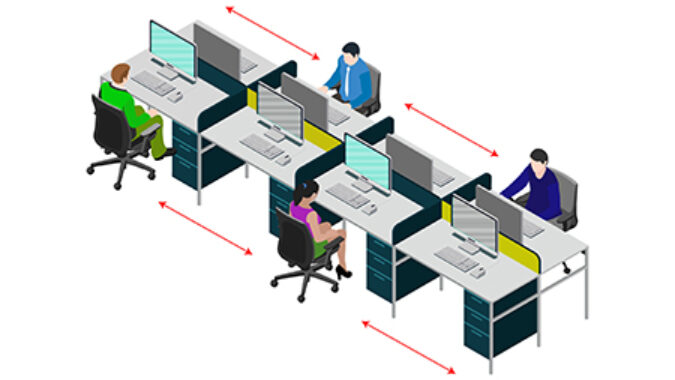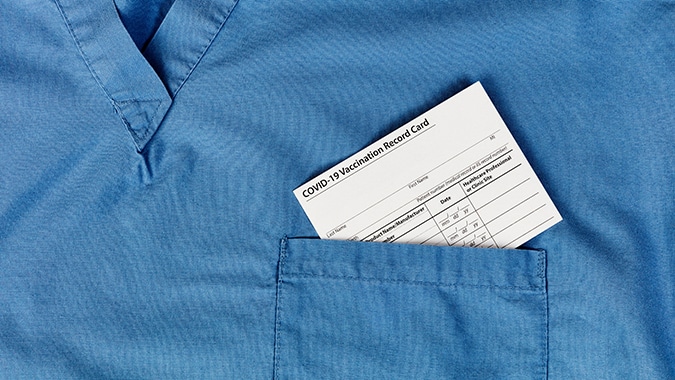 As the state moves to lift COVID-19 restrictions to allow more nonessential businesses to reopen in the weeks ahead, employers need to plan now for the facility modifications and possible employee accommodations they must make to maintain safe workplaces and reduce exposure to costly litigation.
As the state moves to lift COVID-19 restrictions to allow more nonessential businesses to reopen in the weeks ahead, employers need to plan now for the facility modifications and possible employee accommodations they must make to maintain safe workplaces and reduce exposure to costly litigation.
Attorneys Lisa Gingeleskie and John Schmidt Jr., of Lindabury, McCormick, Estabrook & Cooper P.C., hosted an NJBIA webinar Thursday on worksite safety procedures and policies to put in place before a business reopens, as well as what accommodations may be “reasonable” for employees who are fearful or in a high-risk group for contracting COVID-19 because of underlying health conditions.
“We as attorneys anticipate that there is going to be increased employment litigation when people start coming back to work,” said Schmidt, who has over 35 years’ experience representing businesses in labor lawsuits. That’s why employers must protect themselves by implementing facility modifications and COVID-related policies for their workplaces before employees return, he said.
Employers should anticipate requests from anxious employees who want to continue working from home, despite the precautions put in place for a safe business reopening, the attorneys said. However, employers are not required to make this accommodation for every employee who asks.
“Employees who refuse to return to work out of a general fear are generally not protected and may be subject to termination if they do not return to work when the workplace reopens,” Gingeleskie said. “However, as always, there are a few exceptions.”
Disability Accommodations. An employer may be legally required to provide a “reasonable accommodation” if an employee is refusing to return because severe anxiety or another health condition rises to the level of a disability that is substantiated and certified by a treating physician.
“Stress in and of itself is not a disability, but it can become a disability if it interferes with someone’s ability to function,” Schmidt said. “I would suggest that if somebody is bringing to your attention that they’re suffering extreme stress as a result of COVID-19, you most definitely want some medical documentation to support that because it’s too easy for people to try and obtain a ‘reasonable accommodation’ by simply using key words without having documentation to support it.”
Employers can deny requested accommodations that pose an undue hardship on their business, but it is difficult to make that case if an employee has worked from home these past 12 weeks and done a reasonably good job, Schmidt said. However, the Equal Opportunity Employment Commission (EEOC), which enforces laws against workplace discrimination, says employers do have other options, aside from offering telecommuting, when they are trying to accommodate an employee with a disability.
The EEOC recently issued guidance saying that if a disability-related limitation can be addressed with another form of an accommodation at the workplace, such as using a Plexiglas barrier between employees or creating a staggered work times to reduce exposure to others, the employer can choose those options over telecommuting, Schmidt said.
Employers who decide to grant telecommuting requests should be aware the arrangement could expose them to legal action for alleged violations of federal and state wage and hour laws, particularly if the employees involved are nonexempt workers who are paid hourly wages instead of a salary.
“Tracking hours when someone is not in your workplace could be difficult,” Schmidt said. “We’ve had situations with employers where their employees have logged into their computers for 9, 10, 11 hours per day and there’s really no way to determine if they’re working for all of that time. And if a non-exempt employee is on the workplace computer for more than 40 hours a week we run into overtime requirements under both the (federal) Labor Standards Act and the New Jersey Wage & Hour Law.”
OSHA Regulations. The U.S. Occupational Health & Safety Administration (OSHA) mandates that employers provide a workplace “free from recognized hazards that are causing or likely to cause immediate harm,” Gingeleskie said. Employees with “fact-based concerns” about the safety of their workplace can be protected under OSHA if they refuse to return to work.
“An example of that would be if an employee works in a manufacturing facility and there isn’t personal protective equipment being provided and that employee expressed a fear that they need that protective equipment based on their specific job,” Gingeleskie said. “That’s why it’s so important for employers to look at the nature of their business and develop a plan that incorporates all these health and safety features that need to be taken into account prior to an employee returning to work.”
OSHA has issued Guidance on Preparing Workplaces for COVID-19 that can help employers prepare to reopen their businesses in a way that minimizes potential risk to employees and customers, she said. To hear the complete webinar, including an in-depth of modifications that can be made to workspaces and COVID-19 HR policies, go here.



